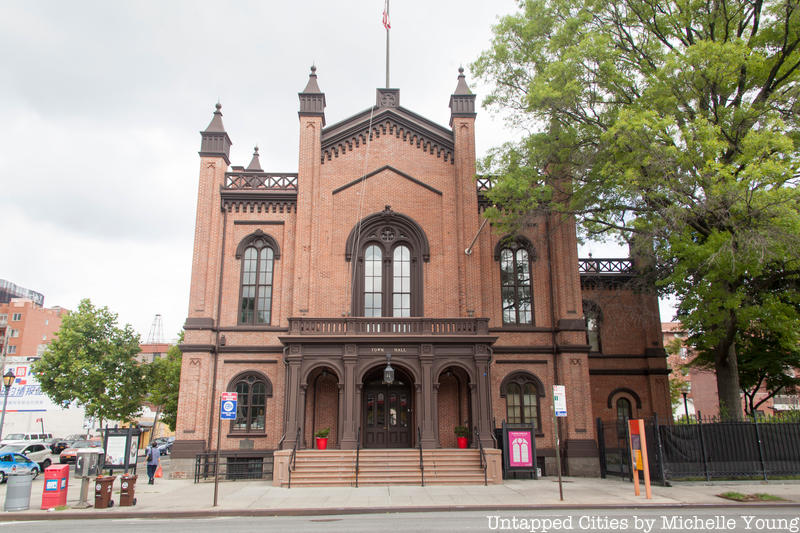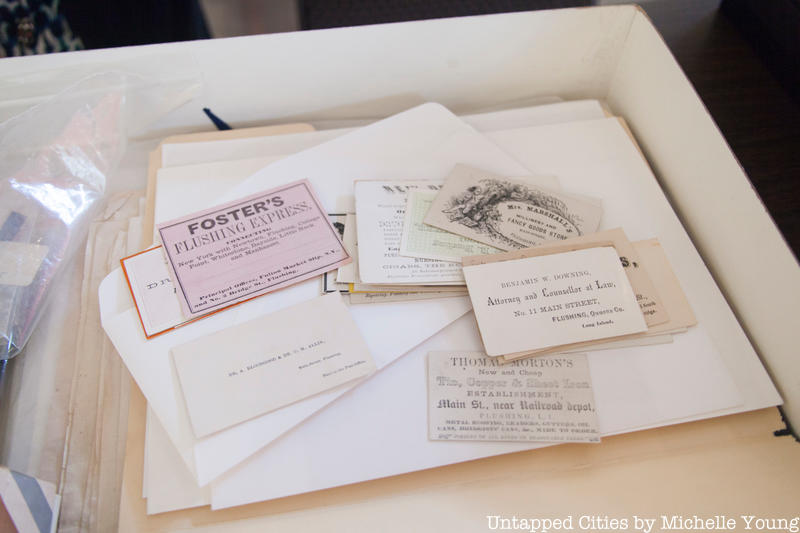
When a New Yorker thinks of Flushing, images of the city’s secondary Chinatown and Koreatown will likely emerge. But Flushing’s rich history is apparent in the pockets of historic, landmarked buildings situated along Northern Boulevard, as well as sprinkled throughout the neighborhood. One of these is Flushing Town Hall, built during the Civil War. It is located between Linden Place and Leavitt Street across the street from Flushing Quaker Meeting House, which dates to 1619. Though the area around it has changed dramatically in the century and a half since the first cornerstone was laid, the Romanesque Revival-style building retains both its stateliness and its “striking picturesqueness,” as the Landmarks Preservation Commission described it in its designation report in 1968.
Still, Flushing Town Hall was characterized by stretches of vacancy and deterioration, with its walls testament to a palimpsest of uses, and was saved thanks to local activism and support. In this article, discover the story of Flushing Town Hall, now home to a multi-cultural art venue run by the Flushing Council on Culture & the Arts, with little known secrets and fun facts about the building’s history. The Flushing Town Hall is part of the Cultural Institutions Group (CIG), as well as an affiliate of the Smithsonian Institute, with an extensive variety of events, education programs, exhibitions and more.
1. There’s a Time Capsule That Was Once in the Cornerstone

The cornerstone of Flushing Town Hall was laid on June 7th, 1862. Inside this cornerstone was placed various documents and objects relevant to the time period and the town. The items include buttons, coins, a pen, a Bible, newspaper clippings, business cards, a history of Flushing, the original document that organized the Flushing Fire Department, and more.
In 1962, during restoration work on the portico the time capsule was rediscovered. The items were donated to the Museum of the City of New York and were later given back to Flushing Council on Culture & the Arts.





